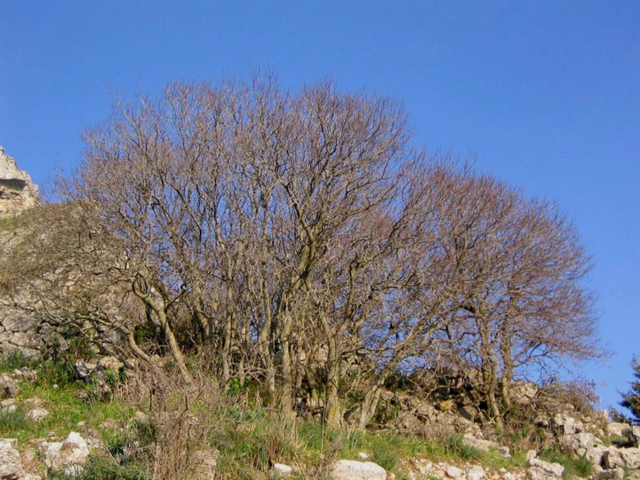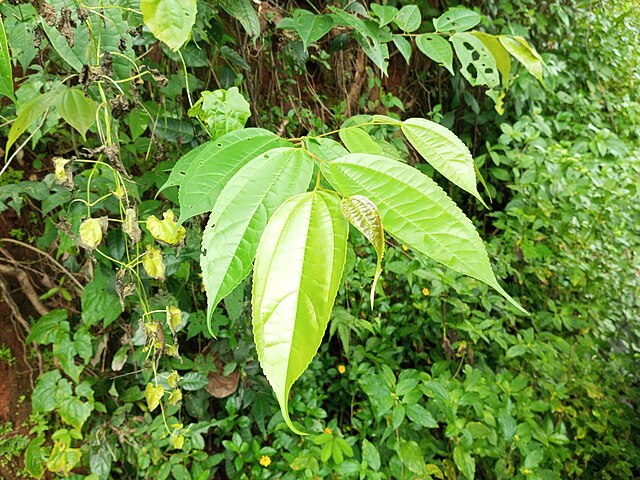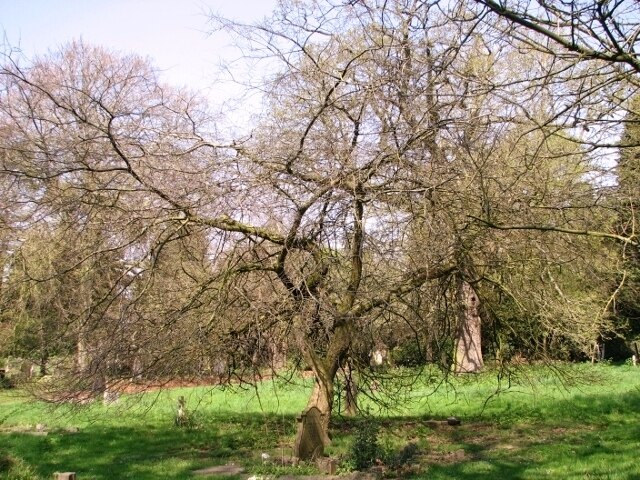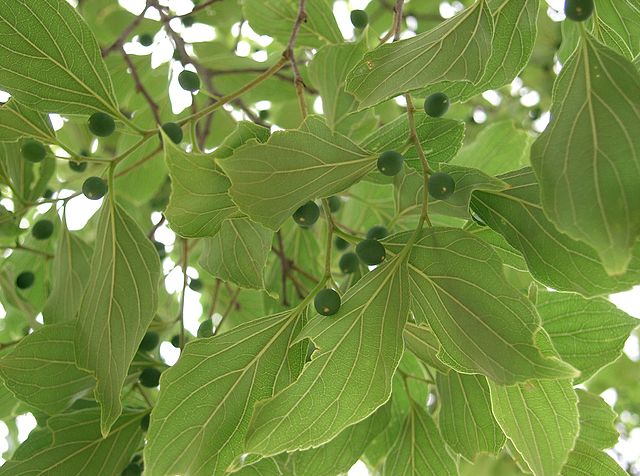Have you ever wondered about those sturdy trees that seem to thrive anywhere, from city streets to wild prairies? Meet the hackberry tree – nature’s ultimate survivor and one of North America’s most underappreciated native species. Whether you’re a homeowner looking for the perfect shade tree or a nature enthusiast wanting to expand your botanical knowledge, this comprehensive guide will transform you into a hackberry expert.
Think of hackberry trees as the Swiss Army knives of the tree world. They’re versatile, reliable, and packed with benefits you probably never knew existed. From supporting local wildlife to withstanding harsh urban conditions, these remarkable trees deserve a spot in every landscape lover’s heart.
What Is a Hackberry Tree?
The hackberry tree belongs to a fascinating group of deciduous trees that have been quietly supporting North American ecosystems for millions of years. Unlike their more famous cousins like oaks or maples, hackberries work behind the scenes, providing crucial environmental services without demanding much attention.
Picture a tree that grows with the determination of a weed but offers the elegance of a carefully cultivated specimen. That’s your hackberry – tough as nails on the outside, but surprisingly sophisticated in its ecological contributions.
Scientific Classification and Common Names
Scientifically known as members of the genus Celtis, hackberry trees belong to the elm family (Ulmaceae). You might hear them called by various names depending on your location: sugarberry, nettle tree, beaverwood, or even “one-berry.” Each name tells a story about how different communities have interacted with these trees throughout history.
The confusion around names isn’t just coincidence – it reflects the tree’s widespread distribution and cultural significance. When a plant has dozens of common names, you know it’s been important to people for a very long time.
Physical Characteristics That Define Hackberry Trees
What makes a hackberry look like a hackberry? First, you’ll notice their distinctive corky bark that develops warty protrusions as the tree matures. It’s like nature’s version of bubble wrap – functional and oddly satisfying to look at.
The leaves are another dead giveaway. They’re asymmetrical at the base, with serrated edges and prominent veining that creates an elegant, elongated heart shape. During autumn, these leaves transform into a beautiful golden-yellow that rivals any ornamental species.
But here’s where hackberries really shine: their adaptability shows in their growth pattern. They can develop into stately shade trees reaching 60 feet tall, or remain modest understory specimens, depending on their environment. It’s like having a tree that reads the room and adjusts accordingly.
Types of Hackberry Trees You Should Know

Not all hackberries are created equal. Understanding the different species helps you choose the right one for your specific needs and location. Think of it as choosing the right tool for the job – each variety has its own superpower.
Common Hackberry (Celtis occidentalis)
This is the heavyweight champion of hackberries. Celtis occidentalis can grow up to 100 feet tall and live for over 200 years. It’s the tree you want when you’re thinking generationally – planting not just for yourself, but for your great-grandchildren.
Common hackberry thrives in the northern United States and southern Canada. It’s incredibly cold-hardy and can handle temperatures that would make other trees pack their bags and move south. The trunk can reach impressive diameters, making it a true statement piece in any landscape.
What sets this species apart is its remarkable drought tolerance once established. It’s like having a camel in tree form – it stores resources efficiently and can weather dry spells that leave other trees struggling.
Sugarberry (Celtis laevigata)
If common hackberry is the northern strongman, sugarberry is its southern cousin with a sweet personality. Celtis laevigata prefers warmer climates and is commonly found throughout the southeastern United States.
The name “sugarberry” comes from its sweet, edible fruits that were historically important to Native American communities. These small, purple drupes might not look like much, but they’re packed with nutrients and have sustained both humans and wildlife for centuries.
Sugarberry tends to be slightly smaller than its northern relative, typically maxing out around 80 feet. However, what it lacks in ultimate height, it makes up for in grace and adaptability to various soil conditions.
Dwarf Hackberry (Celtis tenuifolia)
Don’t let the name fool you – dwarf hackberry might be the smallest of the three, but it’s mighty in its own right. Celtis tenuifolia rarely exceeds 25 feet in height, making it perfect for smaller landscapes or understory plantings.
This species is the ultimate problem-solver for challenging sites. Rocky soils, steep slopes, areas with poor drainage – dwarf hackberry handles it all with aplomb. It’s like having a specialized contractor who excels at difficult jobs others won’t touch.
The smaller stature also means faster establishment and quicker gratification for impatient gardeners. You’ll see meaningful growth and canopy development within just a few years of planting.
Where Do Hackberry Trees Grow Naturally?
Understanding where hackberries thrive in nature gives you the roadmap for success in cultivation. These trees have spent millennia perfecting their survival strategies, and we can learn from their choices.
Native Range and Distribution
Hackberry trees are true Americans – their range extends from southern Canada all the way down to northern Mexico, covering most of the continental United States. This massive distribution speaks to their incredible adaptability.
You’ll find them naturally occurring in river valleys, forest edges, disturbed sites, and even growing from cracks in limestone bluffs. They’re the botanical equivalent of that friend who can make themselves at home anywhere they go.
The eastern species tend to prefer more moisture and richer soils, while western populations have adapted to drier, more alkaline conditions. This geographical variation has created local ecotypes perfectly suited to their specific regions.
Preferred Growing Conditions
While hackberries are famously adaptable, they do have preferences. They perform best in full sun to partial shade with well-draining soil. However, they’re remarkably tolerant of poor drainage, compacted soil, urban pollution, and salt spray.
Think of hackberries as the diplomatic trees of the plant world – they prefer ideal conditions but can negotiate successfully with whatever environment they’re given. This makes them invaluable for challenging landscaping situations.
Soil pH isn’t a major concern for these trees. They’ll grow in acidic soils, alkaline soils, and everything in between. It’s like having a tree that speaks multiple soil languages fluently.
How to Identify a Hackberry Tree

Learning to identify hackberry trees is like developing a superpower – once you know what to look for, you’ll start seeing them everywhere. The key is knowing which features are diagnostic versus which ones can vary.
Distinctive Bark Patterns
The bark is hackberry’s calling card. Young trees start with smooth, gray bark, but as they mature, they develop the characteristic corky ridges and warty protrusions that make identification easy.
This unique bark pattern isn’t just for show – it’s functional. The corky texture helps protect the tree from fire damage and provides insulation against temperature extremes. Nature rarely creates features purely for aesthetics; there’s usually a survival advantage hidden in plain sight.
As trees age, the bark becomes increasingly distinctive. Mature hackberries develop a pattern that looks almost like a topographical map, with ridges, valleys, and raised bumps that create visual interest year-round.
Leaf Shape and Arrangement
Hackberry leaves are arranged alternately along the branches, never directly opposite each other. Each leaf is typically 2-5 inches long with an asymmetrical base – one side of the leaf sits lower on the stem than the other.
The leaf margins are serrated (toothed) except near the base, and the veining is prominent and parallel. During the growing season, leaves are medium to dark green, providing excellent shade and creating a dense canopy.
One identifying trick is to look for the “three main veins” pattern. Unlike many trees that have a single central vein with smaller side veins, hackberry leaves have three prominent veins that originate from the base and extend toward the tip.
Fruit and Seed Characteristics
Hackberry fruits are small drupes, similar to cherries but much smaller – typically about 1/4 inch in diameter. They start green, then ripen to orange-red, and finally turn dark purple or black when fully mature.
These fruits are incredibly important for wildlife identification purposes. They persist on the tree well into winter, providing a reliable food source when other options are scarce. If you see a tree with small, dark berries in winter, there’s a good chance you’re looking at a hackberry.
The timing of fruit production can help with identification too. Hackberries typically produce fruit every year once they reach maturity, unlike some trees that have cyclical fruiting patterns.
Growing and Caring for Hackberry Trees
Successfully growing hackberry trees isn’t rocket science, but a few key principles will set you up for success. Think of it as partnership rather than control – you provide the basics, and the tree handles the rest.
Planting Requirements and Site Selection
Choose your planting site carefully, even though hackberries are forgiving. Full sun locations produce the best growth and form, but partial shade is acceptable. Avoid areas with standing water, though hackberries can handle occasional flooding better than most species.
When planting, dig a hole twice as wide as the root ball but no deeper. The goal is to encourage lateral root development rather than creating a deep pocket that might collect water. Think of it as giving your tree a stable foundation rather than a deep basement.
Timing matters too. Plant in early spring or fall when temperatures are moderate and rainfall is typically more reliable. This gives your tree time to establish roots before facing the stress of extreme temperatures.
Watering and Fertilization Needs
Newly planted hackberries need regular watering for the first year, but established trees are remarkably drought-tolerant. Water deeply but infrequently to encourage deep root development – shallow, frequent watering creates weak root systems.
Fertilization is rarely necessary for hackberries. These trees are excellent at extracting nutrients from poor soils and can actually be harmed by over-fertilization. If your soil is extremely poor, a light application of balanced fertilizer in early spring might help, but it’s usually overkill.
The beauty of hackberries is their low-maintenance nature. Once established, they essentially take care of themselves, leaving you free to enjoy their benefits without constant intervention.
Pruning and Maintenance Tips
Hackberries require minimal pruning beyond removing dead, damaged, or crossing branches. The best time for major pruning is late fall or early winter when the tree is dormant and won’t lose sap.
Young trees benefit from light structural pruning to establish a strong central leader and well-spaced branches. Think of it as teaching good posture early – it prevents problems later in life.
Avoid heavy pruning during the growing season, as hackberries can be slow to compartmentalize wounds. Small cuts heal quickly, but large wounds can become entry points for decay organisms.
Benefits of Planting Hackberry Trees

The benefits of hackberry trees extend far beyond their attractive appearance. These trees are ecological powerhouses that provide services you might never have considered.
Wildlife Value and Ecosystem Support
Hackberry trees support over 60 species of butterflies and moths, making them crucial for pollinator conservation. The hackberry emperor butterfly depends entirely on hackberries for reproduction – no hackberries, no hackberry emperors.
Birds absolutely love hackberry fruits. Species ranging from cedar waxwings to wild turkeys rely on these nutritious berries, especially during fall migration and winter months. A mature hackberry tree can feed hundreds of birds throughout the season.
The dense branching structure also provides excellent nesting sites for songbirds. Many species prefer the security and protection that hackberry canopies offer, making these trees valuable habitat creators.
Urban Landscaping Advantages
In urban environments, hackberries shine as pollution-tolerant street trees. They can handle air pollution, soil compaction, and other stresses that kill more sensitive species. It’s like having a tree with a built-in pollution filtration system.
Their deep root systems help prevent soil erosion while rarely causing problems with sidewalks or foundations. The extensive root network also makes hackberries excellent for stabilizing slopes and preventing washouts.
The dense shade provided by mature hackberries can significantly reduce cooling costs during summer months. Strategic placement of hackberry trees can lower ambient temperatures around buildings by several degrees.
Common Problems and How to Solve Them
Even resilient trees like hackberries can face challenges. Recognizing problems early and responding appropriately can mean the difference between a thriving tree and a struggling one.
Pest Issues and Management
Hackberry psyllids are probably the most common pest problem. These tiny insects cause leaves to develop galls (abnormal growths), but the damage is usually cosmetic rather than life-threatening. Think of it as the tree equivalent of getting mosquito bites – annoying but not dangerous.
Scale insects can occasionally become problematic, especially on stressed trees. These small, immobile pests attach to bark and feed on tree sap. Horticultural oils applied during dormant season can effectively control scale populations.
The key to pest management is maintaining tree health through proper care. Healthy trees can usually tolerate pest damage without significant problems, while stressed trees become more vulnerable to serious infestations.
Disease Prevention and Treatment
Hackberries are generally disease-resistant, but they can occasionally develop fungal issues in humid conditions with poor air circulation. Powdery mildew might appear on leaves during particularly wet summers, but it rarely causes serious damage.
Root rot can be a problem in poorly draining soils, especially during wet seasons. The best prevention is proper site selection and avoiding overwatering. Once root rot establishes, treatment options are limited and often ineffective.
Maintaining good air circulation around your tree helps prevent most fungal diseases. Avoid planting hackberries too close together or in areas where air movement is restricted by buildings or other obstacles.
Uses of Hackberry Trees Throughout History
The relationship between humans and hackberry trees spans thousands of years. Understanding this history helps us appreciate these trees’ cultural significance beyond their ecological value.
Traditional Medicinal Applications
Native American tribes used various parts of hackberry trees for medicinal purposes. The bark was used to treat sore throats and dysentery, while the leaves were applied to wounds as antiseptic poultices.
The fruits were not just emergency food – they were considered nutritious and were often ground into meal for winter storage. Modern analysis confirms that hackberry fruits are indeed rich in antioxidants, healthy fats, and minerals.
Some tribes used hackberry wood for tool handles and construction because of its strength and durability. The wood’s resistance to splitting made it particularly valuable for implements that received heavy use.
Commercial and Industrial Uses
Modern commercial uses for hackberry wood include furniture, flooring, and specialty items. The wood has an attractive grain pattern and takes stain well, making it suitable for visible applications.
Hackberry wood is also valued for tool handles, particularly for hammers and axes, because it absorbs shock well and resists splitting. It’s like having a natural shock absorber built right into the material.
The tree’s rapid growth rate and adaptability make it potentially valuable for biomass production and carbon sequestration projects. As we look for sustainable solutions to climate change, hackberries might play an increasingly important role.
Hackberry Trees in Modern Landscaping
Contemporary landscape design is rediscovering the value of native species like hackberries. These trees offer solutions to many modern landscaping challenges while providing authentic regional character.
Modern urban forestry increasingly recognizes hackberries as valuable street trees. Their tolerance of pollution, soil compaction, and other urban stresses makes them ideal for challenging city conditions where other species fail.
In residential landscapes, hackberries work well as shade trees, windbreaks, or specimen plants. Their relatively fast growth rate means you don’t have to wait decades to enjoy their benefits, while their longevity ensures they’ll be around for future generations.
The trend toward sustainable landscaping also favors hackberries. They require minimal inputs once established, support local ecosystems, and provide multiple environmental services. It’s landscape design that works with nature rather than against it.
Conclusion
Hackberry trees represent everything we should value in landscape plants: resilience, ecological value, low maintenance requirements, and authentic regional character. These remarkable trees have been quietly supporting North American ecosystems for millennia, and they deserve serious consideration for modern landscapes.
Whether you’re planning a large-scale landscape project or simply want to add one special tree to your yard, hackberries offer benefits that extend far beyond their immediate visual impact. They’re investments in environmental health, wildlife habitat, and sustainable landscaping practices.
The next time you see a hackberry tree, take a moment to appreciate its understated elegance and remarkable adaptability. In a world where we often chase exotic and high-maintenance alternatives, sometimes the best solutions are hiding in plain sight, waiting patiently for us to recognize their value.
Frequently Asked Questions
1. How fast do hackberry trees grow?
Hackberry trees are considered moderate to fast growers, typically adding 1-2 feet of height per year under optimal conditions. Young trees establish quickly and can reach meaningful size within 5-7 years of planting, making them excellent choices for homeowners who want relatively quick results without sacrificing longevity.
2. Are hackberry berries safe for humans to eat?
Yes, hackberry fruits are completely safe and nutritious for humans. They have a sweet flavor with a crunchy texture due to their large seed. While they’re not commonly eaten today, they were historically important food sources and are still enjoyed by foragers and traditional communities.
3. Do hackberry trees cause problems with foundations or sidewalks?
Hackberry trees are generally considered low-risk for foundation and sidewalk damage. Their root systems are less aggressive than many other large shade trees, and they tend to grow deeper rather than spreading extensively near the surface. However, like any large tree, they should be planted with appropriate spacing from structures.
4. How can I tell the difference between hackberry and elm trees?
While both belong to the elm family, hackberry trees have distinctive warty bark and asymmetrical leaves, while elms typically have smoother bark (when young) and symmetrical leaves. Hackberry fruits are also distinctive – small, berry-like drupes that elms don’t produce.
5. What’s the best time of year to plant a hackberry tree?
The optimal planting times are early spring (after the last frost) or early fall (6-8 weeks before the first expected frost). These timing windows allow the tree to establish roots before facing the stress of extreme summer heat or winter cold, dramatically improving survival and growth rates.

